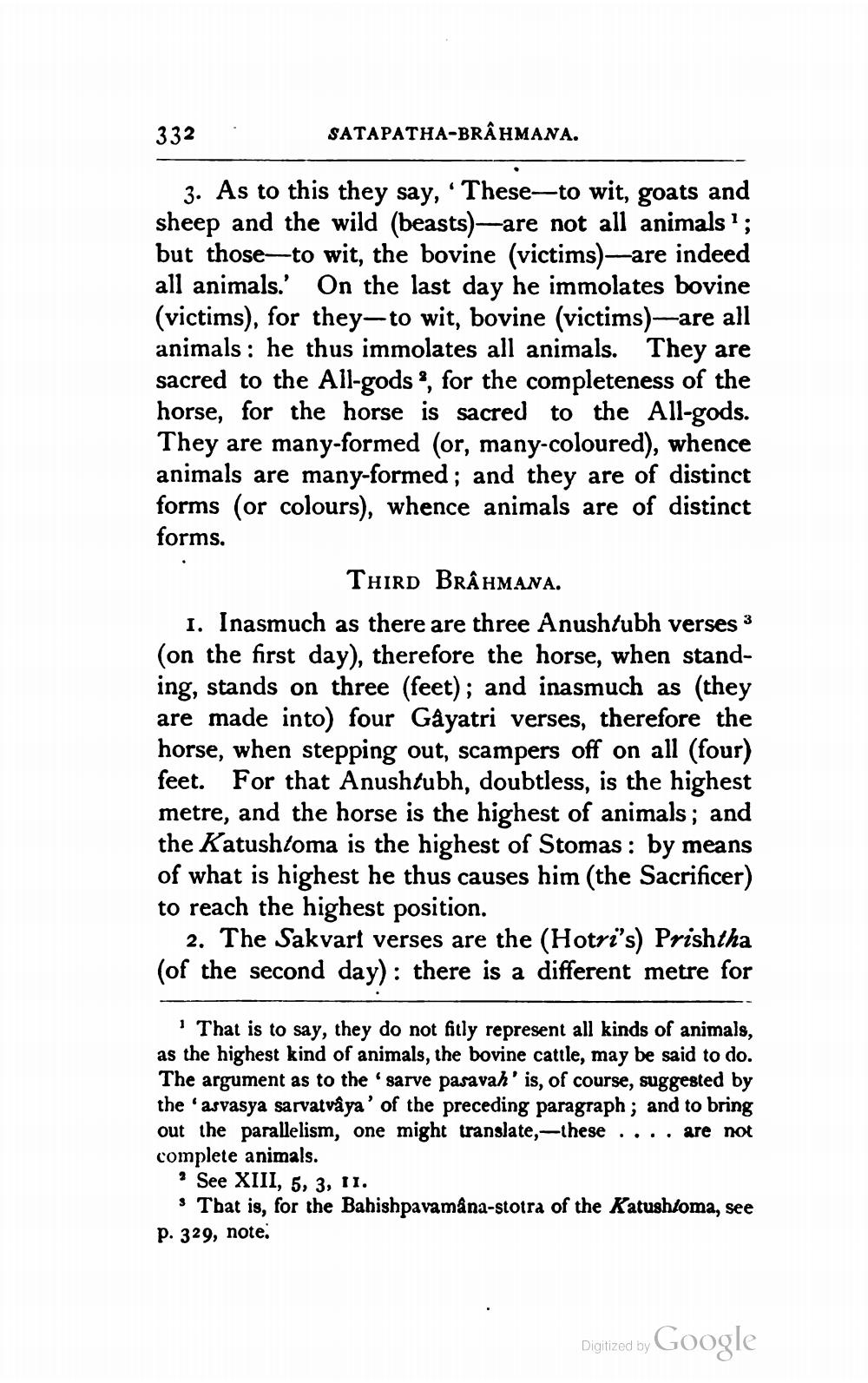________________
332
SATAPATHA-BRAHMANA.
3. As to this they say, 'These-to wit, goats and sheep and the wild (beasts)-are not all animals ? ; but those—to wit, the bovine (victims)—are indeed all animals. On the last day he immolates bovine (victims), for they– to wit, bovine (victims)—are all animals : he thus immolates all animals. They are sacred to the All-gods ?, for the completeness of the horse, for the horse is sacred to the All-gods. They are many-formed (or, many-coloured), whence animals are many-formed; and they are of distinct forms (or colours), whence animals are of distinct forms.
THIRD BRAHMANA. 1. Inasmuch as there are three Anushtubh verses 3 (on the first day), therefore the horse, when standing, stands on three (feet); and inasmuch as they are made into) four Gayatri verses, therefore the horse, when stepping out, scampers off on all (four) feet. For that Anushtubh, doubtless, is the highest metre, and the horse is the highest of animals; and the Katushtoma is the highest of Stomas: by means of what is highest he thus causes him (the Sacrificer) to reach the highest position.
2. The Sakvart verses are the (Hotri's) Prishtha (of the second day): there is a different metre for
That is to say, they do not fitly represent all kinds of animals, as the highest kind of animals, the bovine cattle, may be said to do. The argument as to the 'sarve pasavah' is, of course, suggested by the 'asvasya sarvatvaya' of the preceding paragraph; and to bring out the parallelism, one might translate,-these. ... are not complete animals.
? See XIII, 5, 3, 11.
3 Tbat is, for the Bahishpavamâna-stotra of the Katushtoma, see P. 329, note,
Digitized by Google




